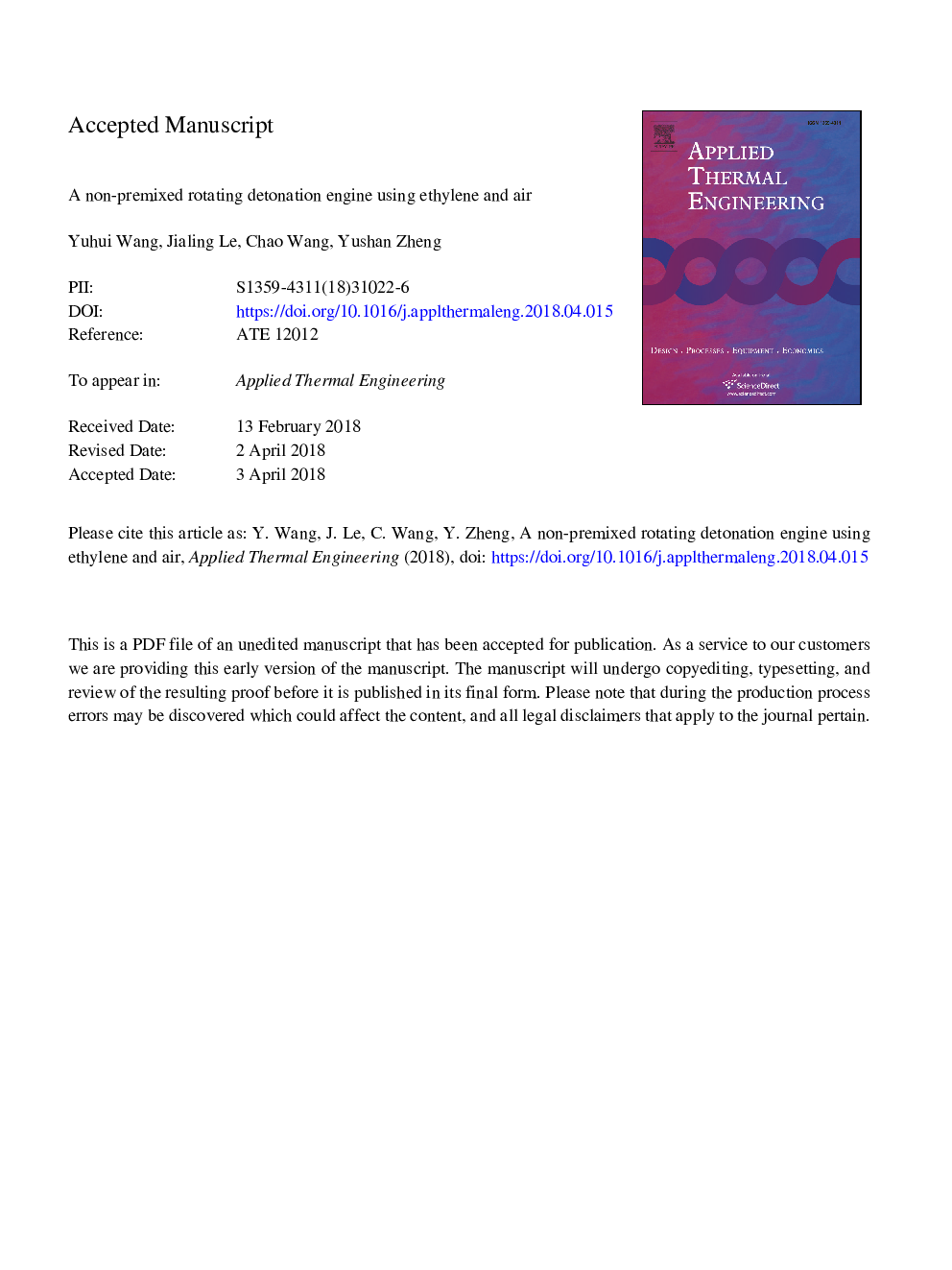| Article ID | Journal | Published Year | Pages | File Type |
|---|---|---|---|---|
| 7045504 | Applied Thermal Engineering | 2018 | 23 Pages |
Abstract
Only a few studies on ethylene-air rotating detonation engines were conducted due to the great difficulty of quick ethylene-air mixing. Hydrogen or oxygen was added into ethylene-air mixtures, or premixed ethylene-air mixtures were used in some previous studies, to obtain rotating detonation waves. Non-premixed rotating detonation waves of high speeds for ethylene and air sources at room temperatures were obtained in the present study, proving ethylene is feasible for air-breathing rotating detonation engines. The hollow combustor channel here had an outer diameter of 100â¯mm. Fuel and air were injected into the combustor from 150 cylindrical orifices of a diameter 0.8â¯mm and a circular gap with a throat width of 1â¯mm, respectively. The detonation speeds were 1256-1653â¯m/s for the air flow rates 465-689â¯g/s and equivalence ratios 0.47-1.06. Most of the speeds were above 80% of Chapman-Jouguet values. Both high-speed images and dynamic pressure sensors showed there was one rotating detonation wave in all the operating conditions.
Related Topics
Physical Sciences and Engineering
Chemical Engineering
Fluid Flow and Transfer Processes
Authors
Yuhui Wang, Jialing Le, Chao Wang, Yushan Zheng,
